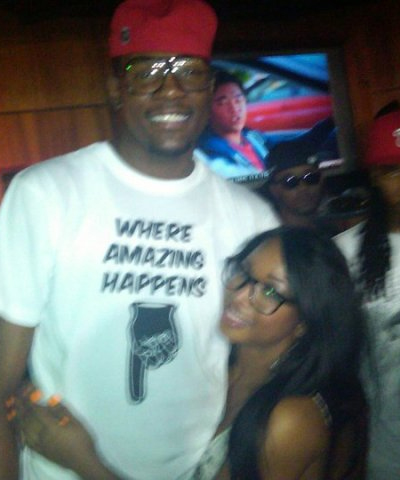Saw T'Wolves vs. Bucks tonight cuz I won a local radio station's trivia question ("Who did the Wolves draft in '05?" Rashad McCants). Shit was fun. I kept yelling Darko was the greatest player ever. Caught a t-shirt from the T'Wolves mascot and gave it to a little kid.capable_keL wrote:HOW ABOUT THOSE TIMBERWOLVES???
Official NBA offseason thread
Moderator: Gregg Popabitch
-
capable_keL
- phila HR Champ
- Posts: 21623
- Joined: Tue Mar 06, 2007 12:58 pm
- Contact:
i been sayin g it for years, the wolves have the most athletic, young explosive core in the league. darko will be the steal of the year. martell webster looks like superman, this year i am not talking about rubio or speculating how we win the division when he comes overelohim wrote:Saw T'Wolves vs. Bucks tonight cuz I won a local radio station's trivia question ("Who did the Wolves draft in '05?" Rashad McCants). Shit was fun. I kept yelling Darko was the greatest player ever. Caught a t-shirt from the T'Wolves mascot and gave it to a little kid.capable_keL wrote:HOW ABOUT THOSE TIMBERWOLVES???
calling it now
we get the 8th seed
bang
Hey, by the way who's Curt?
-
Gregg Popabitch
- Posts: 9859
- Joined: Wed Oct 28, 2009 7:22 pm
dear peanut butter,
your bench and the fact that wright is a starter make your team really suck. i feel sorry for you and other gstate fans, even moreso than i do for myself because at least for part of the season the pacers will delude me into thinking they might make the playoffs. radmanovic, bell, carney, gadzuric, brandan wright, reggie williams, udoh, amundson. what an awful bench. i dont' like dorell as an nba starter either. and worst of all, when biedrins gets in foul trouble you're absolutely fucked for interior defense. damn. nothing personal, just looking at the roster, the coaching, and i don't like it at all.
<3,
rzn
your bench and the fact that wright is a starter make your team really suck. i feel sorry for you and other gstate fans, even moreso than i do for myself because at least for part of the season the pacers will delude me into thinking they might make the playoffs. radmanovic, bell, carney, gadzuric, brandan wright, reggie williams, udoh, amundson. what an awful bench. i dont' like dorell as an nba starter either. and worst of all, when biedrins gets in foul trouble you're absolutely fucked for interior defense. damn. nothing personal, just looking at the roster, the coaching, and i don't like it at all.
<3,
rzn
Nets 2022
-
peanut butter
- Posts: 14678
- Joined: Fri Mar 04, 2005 3:08 am
-
naturalborn103
- Posts: 13774
- Joined: Mon Feb 16, 2004 10:18 am
- Location: boston
- Contact:
Carmelo and the franchise-player debate
Denver Nuggets
A contested shot from Carmelo Anthony is a familiar sight. (NBAE via Getty Images)
Carmelo Anthony is a gifted scorer, but statistics ג both advanced and traditional ג show heגs an inefficient scorer. His field-goal percentage is a tad below the league average, Denverגs fast pace inflates his pure point totals and his offensive rating, which measures how many points a player produces per 100 possessions, is right at the league average.
And yet, we have all spent the better part of the offseason talking about Anthony as if he were a franchise player, if not on the level of Kobe Bryant, LeBron James, Dwyane Wade or Kevin Durant, then certainly right at the top of the next subset of players. But the stats ג other than pure scoring average ג donגt bear that out.
As this debate unfolded, I kept thinking back to the 2009 playoffs, when ג as I remembered it ג Anthony was a singular force who was largely responsible for Denverגs coming within a couple of Trevor Ariza steals of pushing the Lakers to seven games in the Western Conference finals. I had certain images of that series: Anthonyגs getting to the line at will; Anthonyגs D-ing up on Kobe Bryant; Anthonyגs working hard for rebounds on the low block.
This morning I looked up his stats from that series: 27.5 points per game on 40.7 percent shooting, including a 25 percent clip from three-point range on a Baron Davis-like 4.7 attempts per game. And those rebounds? Try 4.8 per game, one more than Chauncey Billupsג average for that series. (Anthony did get to the line 12.5 times per game, which is crazy.)
My eyes saw something in Anthony that the stats didnגt back up.
Jeremy Wagner writes the Denver Nuggets blog Roundball Mining Company, and he had a similar eyes-versus-stats disconnect. So he cued up 10 games worth of videotape of Anthony and five other top perimeter scorers to see why this fantastic shot-maker ends up being so much less efficient than many other elite players. (The other scorers in Wagnerגs sample: Kobe, Durant, LeBron, Wade and Kevin Martin ג the last of those chosen because of his annually insane efficiency).
I implore you to go read Wagnerגs post. It is an outstanding piece of work, filled with easy-to-digest charts and the usual great writing. The upshot is this: Anthony takes many, many more contested shots than those other five guys and, as it would have to be, many fewer open looks. Example: Only 39 percent of Carmeloגs shots in Wagnerגs sample were classified as גopen,ג meaning no defender was within an armגs length upon release. That was the lowest open-looks percentage in Wagnerגs study; Martin had the highest, with 69 percent of his shots classified as open.
The sad part is that Anthony hit a higher percentage of his open looks than anyone Wagner studied, and he hit a decent chunk of his contested looks, too. Heגs clearly a great shot-maker, but heגs taking too many bad shots.
We all know the classic Anthony bad shot: He catches the ball on the right wing with his defender in front of him, takes a couple of jab steps and launches a 20-footer. He also tends to drive into traffic at the rim, resulting in a lot of blocked shots and a declining shooting percentage on in-close field-goal attempts, according to Hoopdata. Thereגs also this: In 2006-2007, about 59 percent of Anthonyגs baskets came as the result of teammate assists, according to Hoopdata. In 2007-2008, that figure was about the same: 58 percent.
But something started to happen in 2008-2009, when just 48 percent of Anthonyגs buckets came after teammate assists, and that figure dropped to 41.6 percent last season. Thatגs still much higher than assisted-on rates for guys like LeBron and Wade, but those two are essentially point guards who create for themselves and others. Anthony has a point guard ג Billups ג who should be able to create looks for him. Overall, Denverגs offense ranked 20th in team-assist rate.
Whatגs going on here? This is a complicated situation, and any comprehensive answer would have to look both at the coaching staffגs offensive strategy and Anthonyגs willingness to move away from isolations. During the first round of last yearגs playoffs, Kevin Arnovitz of ESPN.com noticed an interesting thing: Denver was absolutely shredding Utah with pick-and-rolls, but the Nuggets rarely ran them, choosing instead to rely on isolation-heavy sets their coach at the time, Adrian Dantley, characterized as גrandom basketball.ג Arnovitz had a simple question for Dantley: If the team knew it was more efficient on pick-and-rolls than in גrandomג iso sets, why didnגt Denver run more pick-and-rolls?
Dantleyגs response:Whoa. Either the players were breaking plays or the coaching staff decided to rely on sets with which the team was most comfortable. And those sets have worked well. Denver had the third-most efficient offense last season, largely because it drew fouls more often than any other team. Isolation drives are good for drawing fouls.גStatistically, weגve had success on pick-on-rolls. Weגve told them that. We want them to do that tomorrow. Hopefully they do it. But, the last five years, we do more גrandomג than we do pick-and-roll.ג
But Denverגs offense might reach another level if the team relied less on isolations and more on off-the-ball movement, pick-and-rolls and other ways to spring guys for open looks. And it might need to reach that level when it runs into an elite defense skilled at avoiding fouls ג precisely the sort of defense the Lakers play.
Anthony might thrive in that sort of offense if heגs willing to adapt, but teams interested in acquiring him have to wonder how interested he is.
-
Gregg Popabitch
- Posts: 9859
- Joined: Wed Oct 28, 2009 7:22 pm
Denver's coaching has been horrid. Adrian Dantely last year was abhorrable.
and people don't want to hear about it maybe because he had cancer or because he's likable but George Karl isn't a great head coach. He's a solid coach that was lucky enough to coach really talented teams. The Nuggets never had a play for an inbounds pass after a turnover or out of bounds call until Billups got there. Yes, this is an actual fact. How does a coach not have at least one play to get the ball inbounds.
and people don't want to hear about it maybe because he had cancer or because he's likable but George Karl isn't a great head coach. He's a solid coach that was lucky enough to coach really talented teams. The Nuggets never had a play for an inbounds pass after a turnover or out of bounds call until Billups got there. Yes, this is an actual fact. How does a coach not have at least one play to get the ball inbounds.
-
naturalborn103
- Posts: 13774
- Joined: Mon Feb 16, 2004 10:18 am
- Location: boston
- Contact:
Yea, I remember reading this in the big billups article on ESPN. That is crazy. I also always thought AI time on Denver hurt Mello alot in terms of players growth outside of just scoring.Gregg Popabitch wrote:The Nuggets never had a play for an inbounds pass after a turnover or out of bounds call until Billups got there. Yes, this is an actual fact. How does a coach not have at least one play to get the ball inbounds.
-
Gregg Popabitch
- Posts: 9859
- Joined: Wed Oct 28, 2009 7:22 pm
-
naturalborn103
- Posts: 13774
- Joined: Mon Feb 16, 2004 10:18 am
- Location: boston
- Contact:
-
Gregg Popabitch
- Posts: 9859
- Joined: Wed Oct 28, 2009 7:22 pm
- Positive A
- Posts: 12600
- Joined: Thu Jan 29, 2004 2:13 am
- Location: :ohcanada:
-
Gregg Popabitch
- Posts: 9859
- Joined: Wed Oct 28, 2009 7:22 pm
- Positive A
- Posts: 12600
- Joined: Thu Jan 29, 2004 2:13 am
- Location: :ohcanada:
Gregg Popabitch wrote:the more i get into sports gambling, the more i learn and realize how much positive A stalks my life on the boardwalk and analyzes my gambling habits so he can take my quotes and twist them and make me look like a degenerate.
Gimme Lopez (of the Brook variety) and CP3 for Wall and Charlie V.
-
Gregg Popabitch
- Posts: 9859
- Joined: Wed Oct 28, 2009 7:22 pm
- Positive A
- Posts: 12600
- Joined: Thu Jan 29, 2004 2:13 am
- Location: :ohcanada:
-
Gregg Popabitch
- Posts: 9859
- Joined: Wed Oct 28, 2009 7:22 pm
-
Tired & Broke
- Posts: 3720
- Joined: Fri Jan 06, 2006 2:38 am
- Location: Bible Belt Misery
- Contact:
-
Gregg Popabitch
- Posts: 9859
- Joined: Wed Oct 28, 2009 7:22 pm

